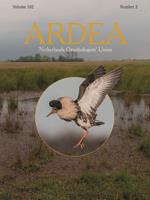Mangrove forests attract many insectivorous birds. Bird density in West African mangroves in January–March 2014 is higher in Avicennia (21 birds/ha canopy) than in Rhizophora (11 birds/ha). The Palearctic species are dominant in the most northern mangroves (14–16°N), but further south resident birds become as numerous as migrants (11–12°N). The European Reed Warbler Acrocephalus scirpaceus is the most common winter visitor in West African mangroves between 12 and 16°N, with an estimated total of 4–6 million birds, which may account for 30–50% of the European population. The mortality of European Reed Warblers while crossing the Sahara desert in spring is higher when their Sudan-Guinean wintering areas have been drought-stricken in the preceding winter. European Reed Warblers wintering in mangroves suffer the same fate, because mangroves in the Sahel region massively die off in drought years.
How to translate text using browser tools
1 July 2014
West African Mangroves Harbour Millions of Wintering European Warblers
Leo Zwarts,
Jan van der Kamp,
Erik Klop,
Marten Sikkema,
Eddy Wymenga

Ardea
Vol. 102 • No. 2
October 2014
Vol. 102 • No. 2
October 2014
Avicennia
carry-over effect
European Reed Warbler
insectivorous warblers
mangrove
migration
Rhizophora




